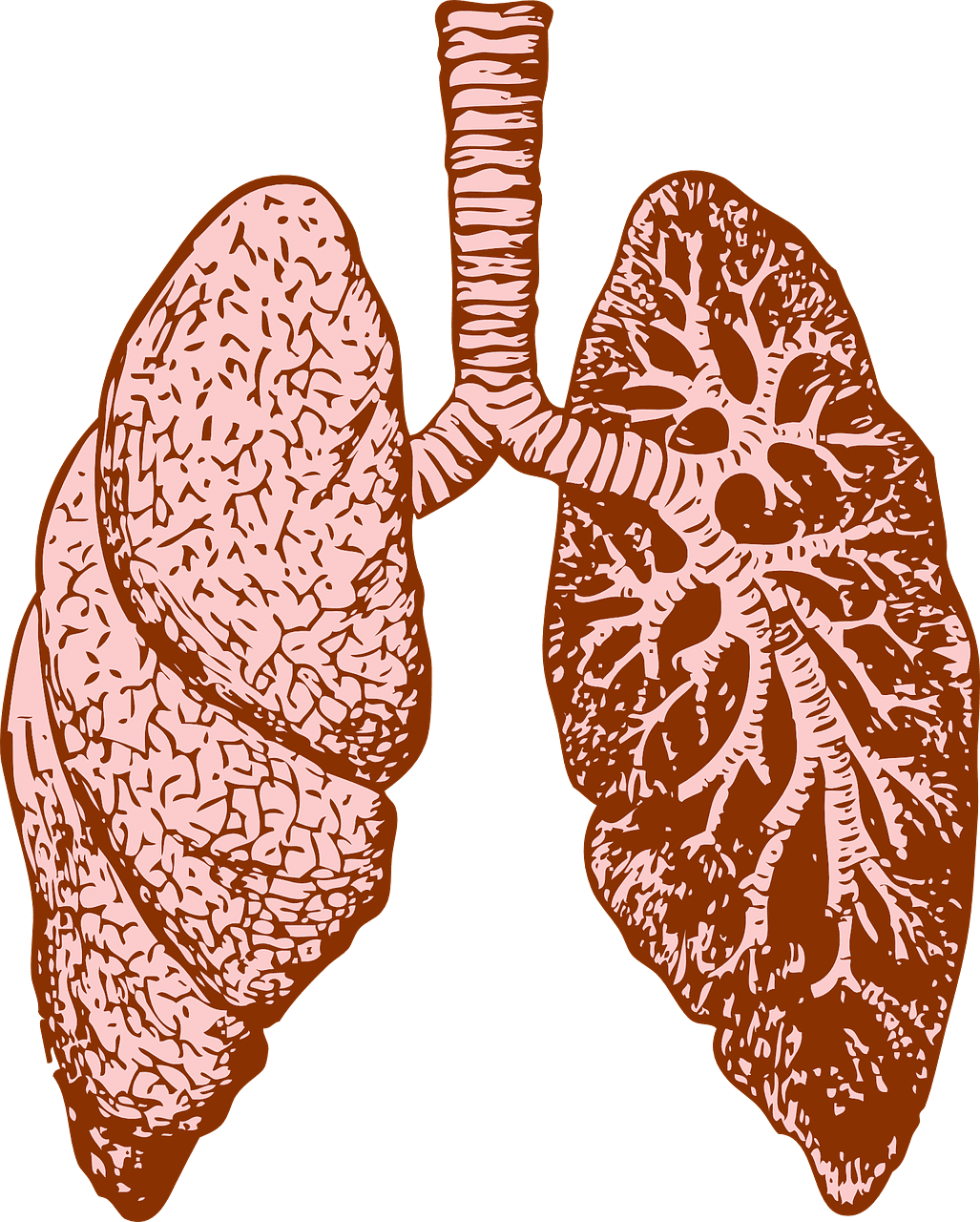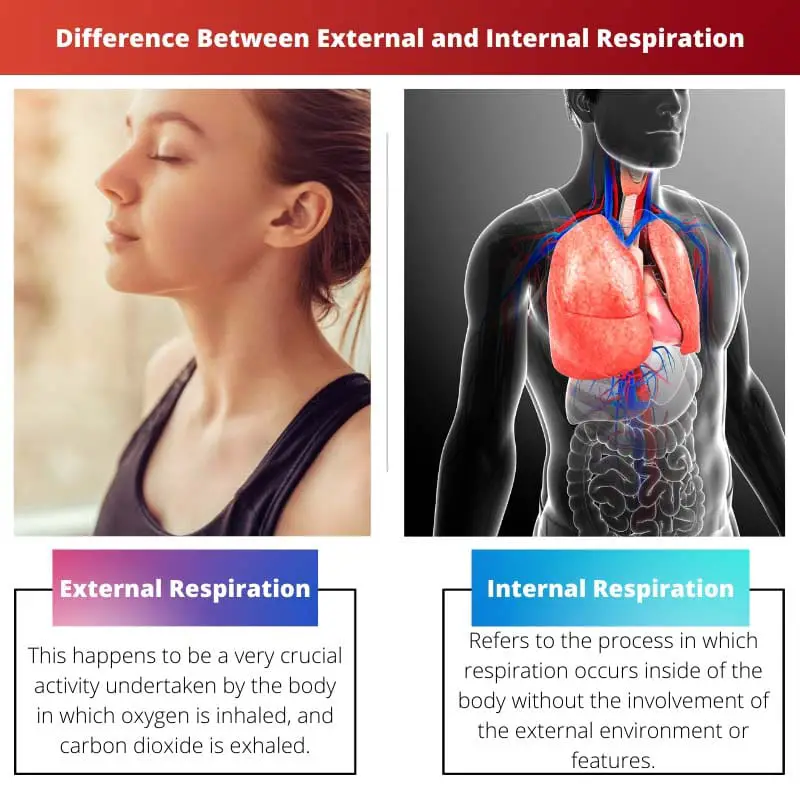Science is a miracle subject not because it does any miracle but because it provides the reasoning behind each and everything that happens all across the globe. One such common activity is respiration.
Many people know the meaning of the given term, but very few know the exact thing it stands for.
External Respiration and Internal Respiration are two such parts of respiration in living organisms which are many times used interchangeably and at each other’s place.
But it is important to know that while these two sound really similar, there are a ton of differences that lie between these two, upon which this article shall shed some light.
Key Takeaways
- External respiration refers to exchanging oxygen and carbon dioxide between the lungs and the environment, while internal respiration occurs at the cellular level within tissues.
- External respiration requires the respiratory system, including the lungs and airways, while internal respiration relies on the circulatory system and cellular metabolism.
- Both processes are crucial for maintaining proper oxygen and carbon dioxide levels to support healthy functioning.
External Respiration vs Internal Respiration
The difference between External Respiration and Internal Respiration is that the former term, as its name itself suggests, refers to the activity of respiration between external phenomena and the body, while on the contrary, Internal Respiration refers to the respiration that takes place between the internal cells of the body only. Apart from this, there are many other differences laying between these two processes that make these different from one another.

External Respiration, as the name itself suggests, occurs when external circumstances are involved. In simple words, this happens to be a very crucial activity undertaken by the body in which oxygen is inhaled and carbon dioxide is exhaled.
Not only this, but this respiration also occurs between the blood cells and the lungs. It includes the exchange of gases like oxygen and carbon dioxide.
On the contrary, Internal Respiration, as suggested by the name itself, refers to the process in which respiration occurs inside the body without the involvement of the external environment or features.
Another term for this process is cellular respiration because it takes place inside the cells only.
Comparison Table
| Parameters of Comparison | External Respiration | Internal Respiration |
|---|---|---|
| Meaning | This happens to be a very crucial activity undertaken by the body in which oxygen is inhaled, and carbon dioxide is exhaled. In this process, breathing and gas exchange takes place. | Refers to the process in which respiration occurs inside of the body without the involvement of the external environment or features. |
| Nature | It is a mechanical process looking at its nature. | It is a chemical process looking at its nature. |
| Occurs between | It occurs between the external environment and the body. | It involves no external interference and occurs inside of the body only. |
| Main action | The most crucial action is the exchange of oxygen and carbon dioxide. | The most crucial action happens to be the segregation of molecules to produce energy that is consumed by the cells. |
| Involves | The external environment, lungs, and mouth | Cells of the body |
| End result | It produces gas exchange only. | It produces energy along with gas exchange. |
| Voluntariness | It can be both voluntary or involuntary. | It has to be an involuntary process only. |
What is External Respiration?
External Respiration is a term of science given to a process performed by a body in which it derives pure and clean oxygen from the environment and surroundings and uses this oxygen for cellular respiration.
Not only this but in this process, polluted carbon dioxide is thrown away from the body to keep the body keep and off any pollutants.
But it does not end here and involves the exchange of gases between the lungs and the blood particles. During this exchange, the inhaled oxygen, which is purely transported into the blood all over the body, and the polluting carbon dioxide from the body is transported to the lungs.
After receiving it, the lungs exhale this and make the body pollution-free. This exchange keeps taking place unless a balance is maintained.
As per its nature, it happens to be a rather mechanical process because of the whole mechanism dedicated to it. And it is a voluntary process as well as an involuntary process depending on the situation.

What is Internal Respiration?
Internal Respiration, also referred to as Cellular Respiration, is another form of respiration that takes place in the body of living organisms, especially humans. Now, as the name itself suggests, it refers to a process that occurs inside the body without involving any external features.
But in reality, this process is just a co-related step in the process of External Respiration because the oxygen that is derived during external respiration gets utilized in internal respiration.
This establishes an inseparable bond between the two processes.
What happens in this process is that the oxygen inhaled gets transported to the blood, and then an exchange of gases happens between the blood and the cells.
After the oxygen reaches cells, they break down this gas into tiny molecules to make the release of ATP possible. This ATP happens to be the energy of the cells.
By nature, this is an involuntary and chemical process that involves no external interference and occurs inside the body only. Oxygen happens to be a very crucial element in this process too.

Main Differences Between External and Internal Respiration
- External Respiration is a process that happens to be a very crucial activity undertaken by the body in which oxygen is inhaled, and carbon dioxide is exhaled. In this process, breathing and gas exchange takes place. While on the other side, Internal Respiration refers to the process in which respiration occurs inside the body without the involvement of the external environment or features.
- External Respiration is a mechanical process looking at its nature. While on the other side, Internal Respiration is a chemical process looking at its nature.
- External Respiration occurs between the external environment and the body. While on the other side, Internal Respiration involves no external interference and occurs inside the body only.
- In External Respiration, the most crucial action is the exchange of oxygen and carbon dioxide. While in Internal Respiration, the most crucial action happens to be the segregation of molecules to produce energy that is consumed by the cells.
- External Respiration can be both voluntary and involuntary. While on the other side, Internal Respiration has to be an involuntary process only.

- https://www.atsjournals.org/doi/abs/10.1164/arrd.1984.129.2P2.S21
- https://www.sciencedirect.com/science/article/pii/0025556468900813

A compelling exploration of external respiration and internal respiration. The information about their nature, interactions, and end results is very enlightening.
Absolutely, Cook Bethany. This article is an invaluable resource for understanding this fundamental physiological process.
I couldn’t agree more, Cook Bethany. The detailed insights into the processes are quite profound.
This is an excellent article for understanding the difference between external and internal respiration, and how crucial it is for the body’s functioning. Thank you for the informative content!
I couldn’t agree more, Dean50. It’s a great explanation of a vital process within the body.
This article provides an intellectually stimulating exploration of respiration, offering profound insights into the nuances of external and internal respiration.
Absolutely, John41. The article’s in-depth analysis is highly informative.
I couldn’t agree more, John41. The clarity and detail of the article are truly exceptional.
This article offers a profound portrayal of external and internal respiration and how they contribute to the body’s overall well-being. The attention to detail is commendable.
Absolutely, James Walsh. The article provides a comprehensive understanding of the biological processes involved in respiration.
A thoroughly engaging and intellectually stimulating discourse on the workings of external and internal respiration. Exceptionally well-presented content.
The detailed explanation of how external and internal respiration occur is highly enlightening. It underscores the significance of these processes in maintaining healthy functioning.
I couldn’t agree more, Graham Isaac. It’s an exceptional analysis of the intricacies of respiration.
Absolutely, Graham Isaac. The article provides valuable insights into the mechanics of respiration.
An in-depth and comprehensive analysis of respiration, highlighting the differences between external and internal respiration. The nuances are clearly explained.
Absolutely, Michael Harris. The article does well in clarifying the essential details of this biological process.
I found the elucidation of external and internal respiration to be very enlightening. It’s thought-provoking how each process relates to different aspects of bodily function.
The elucidation of external and internal respiration in this article is incredibly thorough and enlightening. A significant resource for understanding the intricate biological processes.
Absolutely, Evans Jane. The article’s detailed insights are truly illuminating.
I couldn’t agree more, Evans Jane. The article’s content provides exceptional clarity on this vital subject.
The article effectively illustrates the significance of understanding external and internal respiration and the differences between the two.
The comparison table is particularly helpful in understanding the contrast between external and internal respiration. A well-researched and educational piece.
I agree, Mevans. The article’s structured comparison provides clear distinctions between the two types of respiration.
The insightful comparison of external and internal respiration, as well as their respective processes, is truly enlightening. An exceptional piece of scientific elucidation.
I couldn’t agree more, Samantha Knight. The clarity provided in this article is truly remarkable.
Absolutely, Samantha Knight. The article’s depth of explanation is beyond valuable.